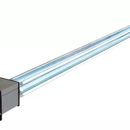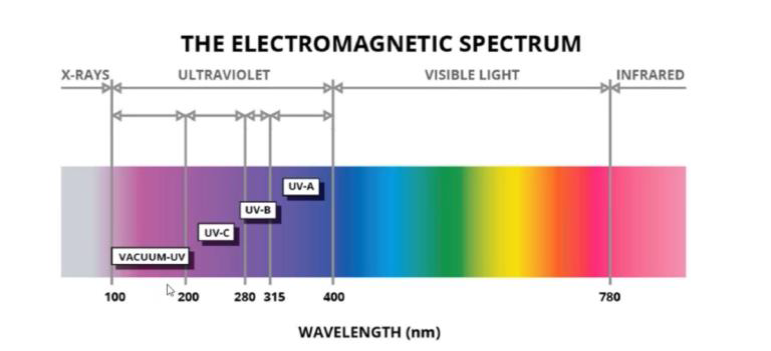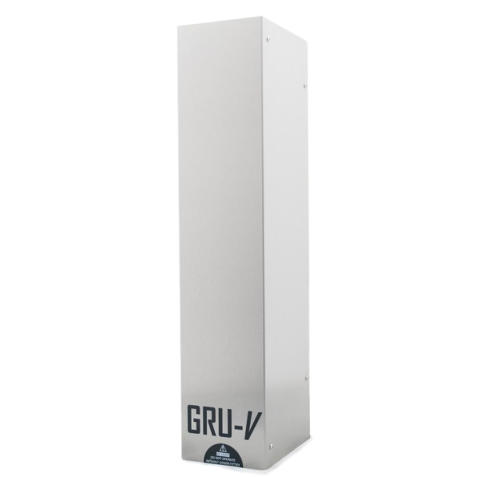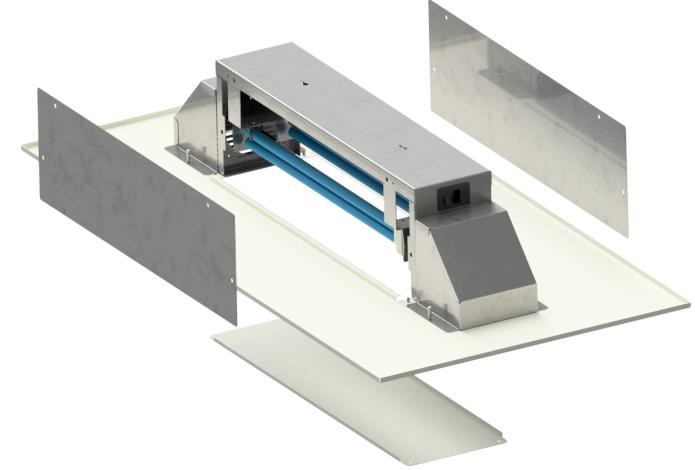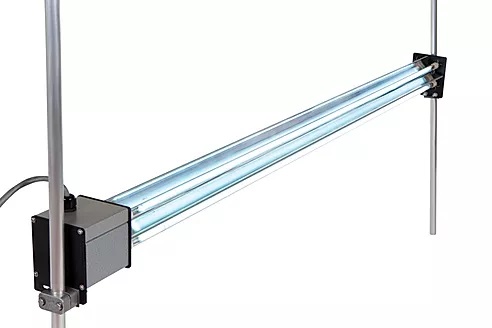UV disinfection of building air to remove harmful bacteria and viruses
Contents |
Introduction
The following article provides a basic explanation of the science and application of using UV (ultraviolet) light to remove airborne bacteria and viruses from buildings.
Increased interest in UV
Since the emergence of COVID-19 there has been a huge increase in interest in UV disinfection for surfaces and air. There has also been a surge in enquiries from architects, building/facility mangers, HVAC/air conditioning experts, building owners and landlords.
The requirement for millions of people to return to work prompts discussion about how existing building infrastructure can be modified to incorporate UV germicidal disinfection. Equally important is how new designs should consider the inclusion of UV.
Various articles and reference papers are available providing facts, but also frequently opinions, about the use of UV light to 'purify' air and many other things. This is frequently complex and overly detailed for those interested in using UV to disinfect air in buildings. Also, much of the information online is rather dated. This brief article is intended to offer a basic factual primer to the subject based on data from September 2020.
What is UV light?
UV light is a range of wavelengths from 10 nm to 400 nm. This bandwidth has higher wavelengths than visible light but lower than X-rays and Gamma rays.
UV is generated naturally by the sun. The UV bandwidth is divided in to three segments:
- UVA, or near UV (315–400 nm)
- UVB, or middle UV (280–315 nm)
- UVC, or far UV (180–280 nm)
To explain the characteristics of each of the above is beyond the scope of this article but they are mentioned because UVC is particularly effective at disrupting bacteria and viruses. UV can be ‘good’ (UVB is responsible for formation of vitamin D) but also ‘bad’ (excessive exposure can cause sunburn and skin cancer).
All UV light is invisible. Ultra is Latin for “beyond” and violet is the last colour of the rainbow.
How does UV light remove microorganisms and viruses?
UVC causes legions in DNA and RNA. Sufficient exposure will cause enough damage to prevent replication, effectively killing the microorganism or virus.
COVID-19 is relatively easy to kill compared to other contaminants. With appropriate exposure to UVC, COVID-19 can be 99.99% killed following a single pass.
Enough UVC exposure is the key to effective but energy optimised systems in buildings. Insufficient UVC = failure to destroy microorganisms and viruses. Excessive UVC generation = unnecessary initial cost and increased energy consumption costs.
How can UVC be applied to 'disinfect' air in buildings?
The core component of any building air UVC disinfection system is lighting tubes emitting the required wavelength and energy. Three primary installation options exist:
Standalone or wall mounted devices.
These devices come in the form of some type of cabinet or enclosure which uses fans to draw air across UVC emitting tubes. Efficacy is a product of air flow rate and tube output power.
Be wary of overly optimistic air flow rates. Devices incorporating other technologies should be critically assessed. HEPA filters clog and will need maintenance, ozone emission is hazardous to humans and activated carbon becomes ineffectual over time.
GRU-V wall mounted air purifier.
Upper air/room systems
Upper air systems are ceiling mounted and deploy louvres to direct the UVC radiation at an angle to minimise exposure to people. Sufficient ceiling height is essential to avoid undesired exposure. Convection and additional mechanical air movement can be used to lift airborne contaminants upwards to the active area.
In duct installations.
UVC can be used in ducted installations in two ways. First, localised UVC can be applied to the system coils to maintain efficiency. But perhaps more importantly a properly modelled UVC Torpedo type installation will provide the correct balance of optimum germicidal effect combined with essential energy efficiency.
In duct mounted Torpedo device.
Conclusion
The key to an energy efficient but effective system is frequent software modelling of the intended ventilation system and UV components. This ensures the correct 'dosage'. Some companies provide suitable in-house modelling services to achieve this.
Steps must also be taken to ensure people are not directly exposed to UV light. The installation is either self contained or installed with safety interlocks to remove power from the UV tubes when maintenance access is required. A suitably designed and installed system can provide effective removal of airborne bacteria and viruses with very little ongoing maintenance or spare part costs.
Related articles on Designing Buildings Wiki
Featured articles and news
The benefits of engaging with insulation manufacturers
When considering ground floor constructions.
Lighting Industry endorses Blueprint for Electrification
The Lighting Industry Association fully supports the ECA Blueprint as a timely, urgent call to action.
BSRIA Sentinel Clerk of Works Training Case Study
Strengthening expertise to enhance service delivery with integrated cutting-edge industry knowledge.
Impact report from the Supply Chain Sustainability School
Free sustainability skills, training and support delivered to thousands of UK companies to help cut carbon.
The Building Safety Forum at the Installershow 2025
With speakers confirmed for 24 June as part of Building Safety Week.
The UK’s largest air pollution campaign.
Future Homes Standard, now includes solar, but what else?
Will the new standard, due to in the Autumn, go far enough in terms of performance ?
BSRIA Briefing: Cleaner Air, Better tomorrow
A look back at issues relating to inside and outside air quality, discussed during the BSRIA briefing in 2023.
Restoring Abbotsford's hothouse
Bringing the writer Walter Scott's garden to life.
Reflections on the spending review with CIAT.
Retired firefighter cycles world to raise Grenfell funds
Leaving on 14 June 2025 Stephen will raise money for youth and schools through the Grenfell Foundation.
Key points for construction at a glance with industry reactions.
Functionality, visibility and sustainability
The simpler approach to specification.
Architects, architecture, buildings, and inspiration in film
The close ties between makers and the movies, with our long list of suggested viewing.
SELECT three-point plan for action issued to MSPs
Call for Scottish regulation, green skills and recognition of electrotechnical industry as part of a manifesto for Scottish Parliamentary elections.
UCEM becomes the University of the Built Environment
Major milestone in its 106-year history, follows recent merger with London School of Architecture (LSE).
Professional practical experience for Architects in training
The long process to transform the nature of education and professional practical experience in the Architecture profession following recent reports.
A people-first approach to retrofit
Moving away from the destructive paradigm of fabric-first.
New guide for clients launched at Houses of Parliament
'There has never been a more important time for clients to step up and ...ask the right questions'
The impact of recycled slate tiles
Innovation across the decades.
EPC changes for existing buildings
Changes and their context as the new RdSAP methodology comes into use from 15 June.






